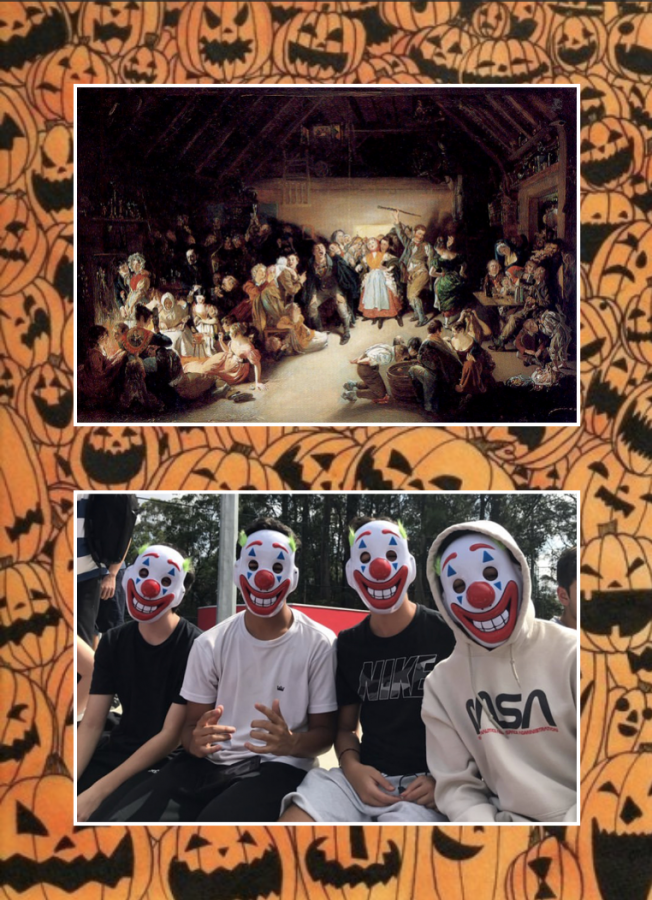The History Of Halloween
Many of you probably know at least a little bit about the history of Christmas, Easter and even Hanukkah, but few know the history of Halloween. The light-hearted holiday we know and love today looks very different than it did many years ago. The Talon has investigated the origins of Halloween, so settle down, and grab a blanket, because this story is going to chill you to the core (or it probably won’t, but just pretend it does).
Our story begins with the 2,000-year-old Celtic festival of Samhain, celebrated on the day that marked the beginning of winter: November 1st. The Celts believed that at this time of year, the boundaries between the living and the dead were blurred, making it easier for spirits to come to the land of the living. So with this special occasion, the Druids (Celtic priests) threw the biggest celebration of the year. They would build massive bonfires and everybody in town would throw things into the fire from crops to actual animal sacrifices. Part of this large celebration was that the people would all go dressed up in animal heads and skins while telling each others’ fortunes.The party didn’t end there though, because later in the evening, after the bonfires were extinguished, they would light the fire once more to help protect them from the upcoming winter.
Later, after 43 A.D, the Celtic lands became heavily influenced by Christanity, and it is then that the church created All Souls Day (a day to honor the dead) to replace the Celtic holiday, and make it more Church-sanctioned. It was essentially the same celebration, but it didn’t include dressing up with animal skins and performing sacrifices. This “new” holiday was called All-Hallows day. The night before became known as All-Hallows Eve and was later shortened to Halloween.
Now that we have that out of the way, let’s take a look at how Halloween tradition has changed at Graded. The first documented Halloween at Graded was in 2009, where the Halloween Parade was said to be “one of the most important events at Graded,” according to the yearbook from that year. There are many similarities from today’s Halloween celebrations and those from ten years ago, like the presence of the samba drums (which can probably be heard from Avenida José Galante), and that witches are one of the most common costumes. The first documented “Zombie Zoo” and “Wacky Week” appear in the yearbooks in 2011. Zombie Zoo is actually pretty important to Graded’s history, as it was the first event to be hosted entirely by Graded students! As we know, Zombie Zoo is still a major event on the Graded calendar, and is something we all look forward to each semester. Don’t miss out on it this year, as it takes place on Thursday the 31st of October, from 4-6 pm!
Flash forward to 2013, where the second Wacky Week appears in the yearbook. Students write about how Wacky Week gives them “a new perspective” on their peers and is a “fun time to get creative.” Themes that were used then are still seen today such as twin day, character day, and decades day! This year, Wacky Week took place between the 28th of October and the 1st of November, and you can find photos on the Stucco Instagram.
Although times have changed, it’s nice to know that we still keep the holiday’s traditions alive, even with our own twist on things. For example, we’ve kept some Wacky Week themes, but recently, we’ve introduced ‘Trends’ day. The same can be said for Halloween in general, since in the present day, we don’t typically perform sacrifices this time of year. And though times have changed, and Halloween might not be one of Graded most important holidays, it’s safe to say we all enjoy missing 20 minutes of class to parade around the school.
Sources: History.com

If for some reason you’re binge-reading all of The Talon’s bios, you may realize that most of the writers find creative and intuitive ways to introduce...

To begin with, Laura is obsessed with Graded – like literally to the point in which her senior hoodie name is "Laura Eagle". This will be her tenth year...









